Latest News
Global Peace Index reveals highest number of countries engaged in conflict since Second World War
LONDON, June 11, 2024 /PRNewswire/ — Today marks the launch of the 18th edition of the Global Peace Index (GPI) from international think-tank, the Institute for Economics & Peace (IEP), revealing that the world is at a crossroads. Without concerted effort, there is a risk of a surge in major conflicts.
Key results
- 97 countries deteriorated in peacefulness, more than any year since the inception of the Global Peace Index in 2008.
- Conflicts in Gaza and Ukraine were the primary drivers of the global fall in peacefulness, as battle deaths reached 162,000 in 2023.
- 92 countries are currently involved in conflicts beyond their borders, more than at any time since the inception of the GPI.
- First of its kind military scoring system suggests that US military capabilities are up to three times higher than China.
- The global economic impact of violence increased to $19.1 trillion in 2023, representing 13.5% of global GDP. Exposure to conflict poses a significant supply chain risk for governments and businesses.
- Militarisation recorded its largest yearly deterioration since the inception of the GPI, with 108 countries becoming more militarised.
- 110 million people are either refugees or internally displaced due to violent conflict, with 16 countries now hosting more than half a million refugees.
- North America saw the largest regional deterioration, driven by increases in violent crime and fear of violence.
There are currently 56 conflicts, the most since World War II. They have become more international with 92 countries involved in conflicts outside their borders, the most since the GPI’s inception. The rising number of minor conflicts increases the likelihood of more major conflicts in the future. For example, in 2019, Ethiopia, Ukraine, and Gaza were all identified as minor conflicts.
Last year recorded 162,000 conflict related deaths. This was the second highest toll in the past 30 years, with the conflicts in Ukraine and Gaza accounting for nearly three-quarters of deaths. Ukraine represented more than half, recording 83,000 conflict deaths, with estimates of at least 33,000 for Palestine up to April 2024. In the first four months of 2024, conflict related deaths globally amounted to 47,000. If the same rate continues for the rest of this year, it would be the highest number of conflict deaths since the Rwandan genocide in 1994.
The global economic impact of violence in 2023 was $19.1 trillion or $2,380 per person. This is an increase of $158 billion, driven largely by a 20% increase in GDP losses from conflict. Expenditure on peacebuilding and peacekeeping totalled $49.6 billion, representing less than 0.6% of total military spending.
Iceland remains the most peaceful country, a position it has held since 2008, followed by Ireland, Austria, New Zealand, and Singapore – a new entrant in the top five. Yemen has replaced Afghanistan as the least peaceful country in the world. It is followed by Sudan, South Sudan, Afghanistan, and Ukraine.
The Middle East and North Africa (MENA) remains the least peaceful region. It is home to four of the ten least peaceful countries in the world and the two least peaceful, Sudan and Yemen. Despite this, the UAE recorded the largest improvement in peacefulness in the region – rising 31 places to 53rd in 2024.
Although most indicators of peacefulness deteriorated over the past 18 years, there was an improvement in the homicide rate which fell in 112 countries, while perceptions of criminality improved in 96 countries.
Steve Killelea, Founder & Executive Chairman of IEP, said: “Over the past decade, peacefulness has declined in nine out of the ten years. We are witnessing a record number of conflicts, a rise in militarisation, and heightened international strategic competition. Conflict negatively affects the global economy, and business risk from conflict has never been higher, compounding the current global economic vulnerabilities.
“It is imperative for governments and businesses worldwide to intensify their efforts to resolve the many minor conflicts before they escalate into larger crises. It’s been 80 years since the end of WWII, and the current crises underscore the urgency for world leaders to commit to investing in resolving these conflicts.”
Changing nature of conflicts
As conflicts become more widespread and more internationalised, increasing complexity reduces the likelihood of achieving lasting solutions. Ukraine and Gaza are examples of ongoing historical grievances or ‘forever wars’ without clear resolutions. The number of conflicts resulting in a decisive victory for either side has fallen from 49% in the 1970s, to less than 9% in the 2010s. Over the same period, the number of conflicts that ended through peace agreements fell from 23% to just over 4%.
Another key factor reshaping conflict is the impact of asymmetric warfare technology, making it much easier for non-state groups, as well as smaller or less powerful states, to compete in conflicts with larger states or governments. The number of states using drones rose from 16 to 40, a 150% increase between 2018 and 2023. Over the same period, the number of non-state groups which committed at least one drone attack rose from 6 to 91, an increase of over 1,400%.
Middle East tensions
Due to the Gaza war, Israel’s ranking fell to an all-time low of 155th, the largest deterioration in peacefulness in the 2024 GPI. However, over the past decade Palestine has witnessed the largest deterioration, slipping to 145th. Highlighting the growing tensions, Israeli media stories with a negative sentiment towards Palestinians increased from just over 30% in 1999 to 92% in early 2023, while stories with negative sentiment by Palestinian media towards Israelis increased from just under 30% in 1999 to 85% in early 2023.
The conflict has also thrown the entire Middle East region into crisis, involving Syria, Iran, Lebanon and Yemen, with the economic consequences mounting and a high risk of open warfare. A further broadening of the conflict would severely impact the global economy, potentially triggering a worldwide recession. Highlighting the point, Syria’s economy shrunk by more than 85% after the start of the civil war in 2011, and the Ukrainian economy shrunk by 29% in the year after the onset of the conflict in 2022.
Global military capability
Since the start of the Ukraine war, militarisation has increased in 91 countries, reversing the trend of the prior 15 years. Given the forward commitments of many countries to military spending, it is unlikely to improve in the coming years.
Changes in the dynamics of warfare have seen troop numbers decrease while technological sophistication has increased. Over the last decade, 100 countries reduced their armed forces personnel, while global military capability increased by over 10%.
First of its kind research by IEP calculates the military capability of countries by combining military sophistication, technology, and combat readiness. It reveals that the US has substantially higher military capability than China, which is closely followed by Russia. Traditional approaches to measuring military capability generally count the number of military assets only.
Regional highlights
- Europe remains the most peaceful region, however, it recorded its largest year on year increase in military expenditure since the GPI’s inception.
- North America recorded the largest regional deterioration in peacefulness with a drop of just under 5%. Both the US and Canada saw significant falls, primarily driven by increases in violent crime and fear of violence.
- Sub-Saharan Africa is now the second least peaceful region behind MENA as it faces several security crises – most notably increasing political unrest and terrorism in the Central Sahel.
- Asia-Pacific remains the second most peaceful region with a slight decline in peacefulness. Papua New Guinea recorded the worst deterioration in the region, caused by intensified tribal violence from disputes over territory and land ownership.
- Central America and the Caribbean experienced a minor decline in peacefulness, as countries like Haiti battled high levels of organised crime and civil unrest. Despite this, El Salvador recorded the world’s most significant peace improvement.
- South America experienced the second largest fall in peacefulness with a deterioration of 3.6%. The largest changes occurred for the Homicide Rate, Political Terror Scale, and Intensity of Internal Conflict indicators.
NOTES TO EDITORS
For more information and to download the Global Peace Index 2024, visit visionofhumanity.org and economicsandpeace.org. The full GPI report, articles and interactive maps are available at: visionofhumanity.org
X: @globpeaceindex
Facebook: facebook.com/globalpeaceindex
Instagram: instagram.com/globalpeaceindex
About the Global Peace Index (GPI)
Produced by the international think-tank the Institute for Economics & Peace (IEP), the GPI report presents the most comprehensive data-driven analysis to date on peace, its economic value, trends, and how to develop peaceful societies. The report covers 99.7% of the world’s population and uses 23 qualitative and quantitative indicators from highly respected sources to compile the Index. These indicators are grouped into three key domains: Ongoing Conflict, Safety and Security, and Militarisation.
About the Institute for Economics & Peace (IEP)
IEP is an international and independent think tank dedicated to shifting the world’s focus to peace as a positive, achievable and tangible measure of human well-being and progress. It has offices in Sydney, Brussels, New York, The Hague, Mexico City and Nairobi.
Logo – https://mma.prnewswire.com/media/792052/4102581/IEP_Logo.jpg
![]() View original content:https://www.prnewswire.co.uk/news-releases/global-peace-index-reveals-highest-number-of-countries-engaged-in-conflict-since-second-world-war-302165985.html
View original content:https://www.prnewswire.co.uk/news-releases/global-peace-index-reveals-highest-number-of-countries-engaged-in-conflict-since-second-world-war-302165985.html

Latest News
COCA Celebrates Q2 2024 with Record-Breaking Milestones and New Launches
HONG KONG, Aug. 7, 2024 /PRNewswire/ — COCA, a pioneering force in the crypto wallet and financial services industry, has achieved several remarkable milestones in Q2 2024. Thanks to the steadfast support of its user community, COCA has launched new features, expanded its partnerships, and garnered prestigious accolades, further solidifying its position as a leader in the crypto space.
Launch of Physical Cards
COCA has introduced its highly anticipated physical cards, which are now available globally and compatible with Apple Pay and Google Pay. These cards allow users to make transactions with ease, earning cashback rewards on their purchases. This significant launch marks a step forward in integrating crypto with everyday financial activities, enhancing user convenience and financial flexibility.
Wallet Growth Milestone
The company has reached a significant milestone with 510,000 active wallets, reflecting a 102% growth quarter-on-quarter. This surge in active wallets highlights the increasing trust and adoption of COCA’s platform, as more users join the COCA community to manage their crypto assets securely and efficiently.
Transaction Volume Surge
In Q2 2024, COCA processed over USD 450,000 in transactions through its platform, demonstrating the robust usage and popularity of its financial services. This impressive transaction volume underscores COCA’s commitment to providing smooth and efficient crypto payment solutions.
Integration with Revolut
COCA has made it easier for users to fund their wallets by integrating with Revolut. This new feature allows seamless loading of crypto assets, enhancing the overall user experience and accessibility of COCA’s services.
Award Recognition
COCA has been honoured with the “Best Startup” award in the Financial Revolution category at CONF3RENCE & BLOCKCHANCE 2024. This award is a testament to COCA’s innovative approach and significant impact on the future of finance, recognizing its efforts in driving forward the digital financial ecosystem.
New Strategic Partnerships
COCA has formed strategic partnerships with industry leaders such as Wirex Pay and GoMining. These collaborations aim to provide users with enhanced rewards and a superior overall experience. The partnerships signify COCA’s dedication to expanding its ecosystem and delivering greater value to its users.
Welcoming Pavel Matveev
COCA is excited to announce the addition of Pavel Matveev, Founder of Wirex, to its team as a Strategy and Product Advisor. Pavel’s extensive experience and visionary approach are expected to drive COCA’s strategic initiatives and product development, contributing to the company’s continued growth and innovation.
Season 2 Point System Launch
Season 2 of COCA’s popular point system has launched, offering users the opportunity to earn points through various activities, including trades, referrals, holding assets, and spending with COCA cards. With a prize pool of USDT 3500 and 5 Wirex Pay Nodes, this season promises exciting rewards and increased user engagement. The season ends on August 9th, so users are encouraged to participate actively.
NFT Giveaway
In a special giveaway, COCA distributed 1000 GoMining NFTs to lucky users. These NFTs provide unique benefits, including enhanced mining capabilities and exclusive digital collectibles, adding significant value to the user experience.
For further details on COCA’s Q2 achievements and upcoming initiatives, visit the company’s blog.
Website: coca.xyz
COCA continues to redefine the crypto experience with its innovative solutions, seamless integrations, and user-focused approach. The company’s recent milestones and future plans highlight its commitment to leading the way in the digital financial landscape.
About COCA
COCA is a next-generation crypto super app designed to simplify and secure the crypto experience for users worldwide. With innovations in security, usability, and integration, COCA is at the forefront of the digital asset revolution. For more information, visit coca.xyz.
Photo – https://mma.prnewswire.com/media/2477245/COCA_Q2_2024.jpg
Logo – https://mma.prnewswire.com/media/2338075/4848605/COCA_Logo.jpg
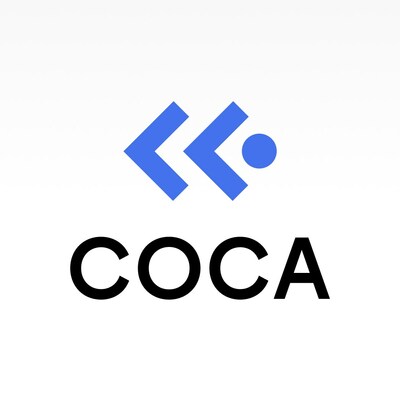
![]() View original content:https://www.prnewswire.co.uk/news-releases/coca-celebrates-q2-2024-with-record-breaking-milestones-and-new-launches-302216619.html
View original content:https://www.prnewswire.co.uk/news-releases/coca-celebrates-q2-2024-with-record-breaking-milestones-and-new-launches-302216619.html

Latest News
Stake and Earn with KuCoin’s Innovative GemPool Platform
VICTORIA, Seychelles, Aug. 7, 2024 /PRNewswire/ — KuCoin, a leading global cryptocurrency exchange, is excited to announce the launch of GemPool, its innovative new platform that allows users to acquire token airdrops as a reward for staking their crypto assets. This unique product is designed to provide early access to emerging crypto projects while offering rewards for their existing holdings at zero cost. By staking respective tokens in separate pools, users can farm new tokens and gain a foothold in the latest developments within the cryptocurrency market.
GemPool also offers flexible staking terms, allowing users to stake and un-stake their assets anytime within the designated period without lock-up restrictions. This flexibility ensures that users can manage their assets according to their preferences and market conditions. Additionally, GemPool provides zero-cost rewards, enabling users to earn tokens while holding their existing cryptocurrencies. By staking their tokens, users contribute to the growth of promising new projects, supporting innovation and development within the crypto space. With completion of tasks offered, users are eligible to earn multiplier bonus and receive more rewards.
Users can participate by staking KCS, USDT, or other specified assets in designated pools. The rewards are earned according to the respective yields of the pools, ensuring a fair and exciting experience for all users.
For more information on how to participate and the benefits of GemPool, please visit the KuCoin GemPool page.
About KuCoin
Launched in September 2017, KuCoin is a leading cryptocurrency exchange with its operational headquarters in Seychelles. As a user-oriented platform with a focus on inclusiveness and community engagement. It offers over 900 digital assets across Spot trading, Margin trading, P2P Fiat trading, Futures trading, and Staking to its 34 million users in more than 200 countries and regions. KuCoin ranks as one of the top 6 crypto exchanges. KuCoin was acclaimed as “One of the Best Crypto Apps & Exchanges of June 2024” by Forbes Advisor and has been included as one of the top 50 companies in the “2024 Hurun Global Unicorn List”. Learn more at https://www.kucoin.com/.
Logo – https://mma.prnewswire.com/media/2356857/KuCoin_Horizontal_Green_LOGO_Logo.jpg
![]() View original content:https://www.prnewswire.co.uk/news-releases/stake-and-earn-with-kucoins-innovative-gempool-platform-302216471.html
View original content:https://www.prnewswire.co.uk/news-releases/stake-and-earn-with-kucoins-innovative-gempool-platform-302216471.html

Latest News
Trust Wallet Launches Gamified Education Platform and Loyalty Program to Enhance and Reward Web3 Learning
DUBAI, UAE, Aug. 7, 2024 /PRNewswire/ — Trust Wallet, the world’s leading self-custody Web3 wallet and Web3 gateway trusted by over 130 million users, has launched Trust Wallet Quests, a gamified education platform within the Trust Wallet mobile app which encourages users to earn points while exploring and learning about Web3.
Users can engage in task-based challenges ranging from quizzes to complex problem-solving scenarios composed of various DeFi and Web3 activities, all designed to deepen their understanding of blockchain technology and decentralized applications (dApps), and expose them to exciting opportunities within Web3. As an incentive, users will earn Trust Points, a loyalty-based points system designed to reward user activity within the Trust Wallet mobile app. With Trust Points, users can earn rewards upon the completion of specific tasks, making Web3 more rewarding and fun.
In the future, Trust Points will offer additional gamification features, such as unlocking achievements, badges, and levels. This interactive approach not only boosts individual learning but also contributes to broader community education and adoption of decentralized technologies, making Trust Wallet Quests a dynamic and exciting way to reward loyal users and engage with communities in Web3.
On the motive for launching Trust Wallet Quests, Eowyn Chen, CEO of Trust Wallet, stated: “The complex technology and fast-paced industry can be intimidating for both new and seasoned users. The introduction of Quests on Trust Wallet further solidifies our commitment to making it easier for millions to navigate Web3, aligning perfectly with our mission to build a seamless Web3 hub and open ecosystem for all.”
Nate Zou, Head of Product at Trust Wallet, highlighted what to expect from Trust Points and Trust Wallet Quests: “Trust Points and Quests are just the first iteration of a much-needed reward system for our community. Within 2024, we have plans to build on this, combining rewards with many of our other web3 product offerings. Overall, we envision this points system not only changing how users engage with Trust Wallet, but also encouraging more collaboration between Trust Wallet, our users and other web3 ecosystem players.”
Trust Wallet Quests and Trust Points are now available on both Android and iOS versions of Trust Wallet’s mobile app. Download here: https://short.trustwallet.com/TrustWalletQuests
About Trust Wallet
Trust Wallet is the self-custody, multi-chain Web3 wallet and Web3 gateway for people who want to fully own, control, and leverage the power of their digital assets. From beginners to experienced users, Trust Wallet makes it easier, safer, and convenient for millions of people around the world to experience Web3, access dApps securely, store and manage their crypto and NFTs, buy, sell, and stake crypto to earn rewards, all in one place and without limits.

Photo – https://mma.prnewswire.com/media/2475264/image.jpg
Logo – https://mma.prnewswire.com/media/2475420/Trust_Wallet_Core_Logo_Blue_Logo.jpg
![]() View original content:https://www.prnewswire.co.uk/news-releases/trust-wallet-launches-gamified-education-platform-and-loyalty-program-to-enhance-and-reward-web3-learning-302215130.html
View original content:https://www.prnewswire.co.uk/news-releases/trust-wallet-launches-gamified-education-platform-and-loyalty-program-to-enhance-and-reward-web3-learning-302215130.html

-
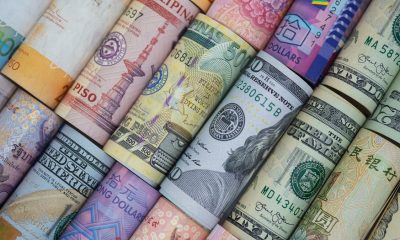
 Fintech5 days ago
Fintech5 days agoFintech Pulse: Your Daily Industry Brief (Synapse, Shenzhen Institute, Visa, AutomatIQ, MeridianLink)
-
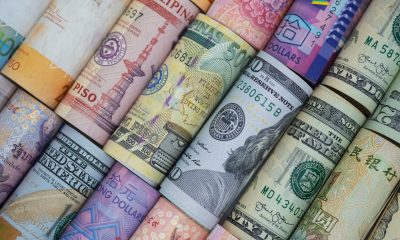
 Fintech4 days ago
Fintech4 days agoFintech Pulse: Your Daily Industry Brief (Revolut, Bestow, Advyzon, Tyme Group, Nubank)
-
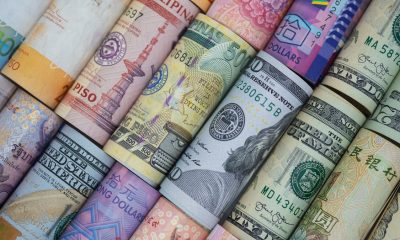
 Fintech2 days ago
Fintech2 days agoFintech Pulse: Your Daily Industry Brief (Chime, ZBD, MiCA)
-
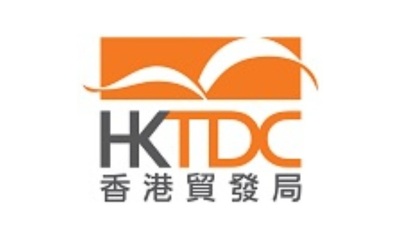
 Fintech4 days ago
Fintech4 days agoAsian Financial Forum returns as region’s first major international financial assembly in 2025
-

 Fintech5 days ago
Fintech5 days agoNASDAQ-Listed LYTUS Appoints Visionary Leader Sai Guna Ranjan Puranam as COO (Lytus Healthcare) and Group CTO (Lytus Technologies) to Revolutionize Healthcare and Technology
-

 Fintech5 days ago
Fintech5 days agoDhaka Court Dismisses Allegations Against Nagad Founder Tanvir A Mishuk
-

 Fintech PR3 days ago
Fintech PR3 days agoGan & Lee Pharmaceuticals Announces U.S. FDA Clearance of the IND application for the innovative Bi-weekly GLP-1RA GZR18 Injection, Bofanglutide, with chronic weight management Indication (A Phase 2 head-to-head with Tirzepatide clinical trial)
-

 Fintech PR5 days ago
Fintech PR5 days agoFrost & Sullivan Recognizes AllianceOne and Central Florida Expressway Authority with 2024 Customer Value Leadership Award




